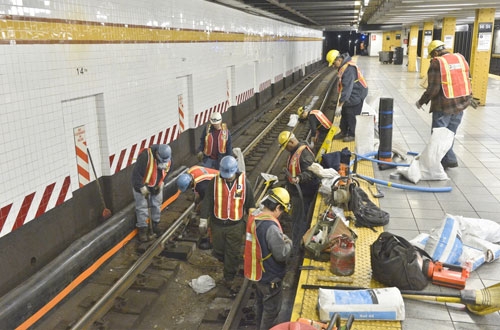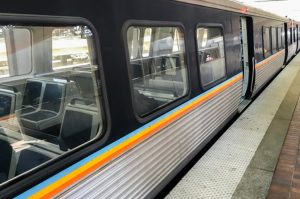FHWA, FTA take on workforce “cliff”
Written by Jenifer Nunez, assistant editor
One of the transportation industry's greatest challenges is how can to attract, educate and retain a workforce that has both the skills and the numbers to keep the nation moving.
“Unless we work together to address the looming shortage of workers, buses are going to be behind schedule; rail systems will see delays and slowed maintenance will mean that vehicles will have more breakdowns and higher operating costs,” Federal Highway Administration Administrator Gregory Nadeau and Federal Transit Administration Acting Administrator Carolyn Flowers wrote in a post to the United States Department of Transportation’s (USDOT) Fast Lane blog.
The two say that the transportation industry – and transit in particular – is facing a “demographic cliff,” with record retirements and too few ready to take their place.
This is a problem highlighted last year in a joint report from the U.S. Departments of Transportation, Labor and Education on workforce needs. The report found that when growth and retirements combine, 4.6 million people would need to be hired by 2022. That’s more than double the current workforce. Among transportation sectors, it is transit that has the highest percentage of workforce over 55 and only 37 percent are younger than 45.
“We need to make sure that everyone has the opportunity to compete for jobs that require greater skill and responsibility and higher pay and upward mobility, including managerial and executive positions,” they posted in the blog.
Recently, the Federal Transit Administration (FTA) hosted a Workforce Summit FTA workforce grant recipients, officials from USDOT and the Department of Labor and industry partners. The summit brought together representatives of FTA’s local workforce grantees for the first time, allowing them to share their stories, knowledge and best practices.
“The good news is that resources are available for those seeking to create, maintain or expand their workforce development programs. Ensuring that there are enough skilled workers to meet those needs then requires investment in training now,” the blog noted.
Additionally, U.S Transportation Secretary Anthony Foxx awarded $3 million in job training grants to eight states. The “Ladders of Opportunity On-The-Job Training/Supportive Service (OJT/SS) Pilot Program” grants are part of a department-wide plan.
“But while this funding is new, work to expand our nation’s labor force is not. The Obama Administration has worked tirelessly to support and expand successful workforce programs,” the officials stated in the blog.
The U.S. Department of Labor’s “American Apprenticeship Grants” have made $175 million available for workforce development. And FTA’s own “Innovative Public Transportation Workforce Development Grants” have bolstered 37 projects nationwide that are creating solutions. A new initiative called America’s Promise Grants will make $100 Million available to expand high-quality education and training programs. Plus, the nation’s newest surface transportation law –the FAST Act – allows FTA’s grantees to use formula funding totaling almost $76 million to support local workforce development, training and education. The goal is to create innovative tuition-free programs that strengthen the pipeline of those ready for in-demand jobs.
“To meet the demands of the future, we’re going to have to build strong partnerships that recognize and take advantage of our America’s strengths and diversity. By giving people the specialized training our future transportation workforce needs, we can ensure that our transportation system remains safe and efficient for decades to come,” they wrote.





